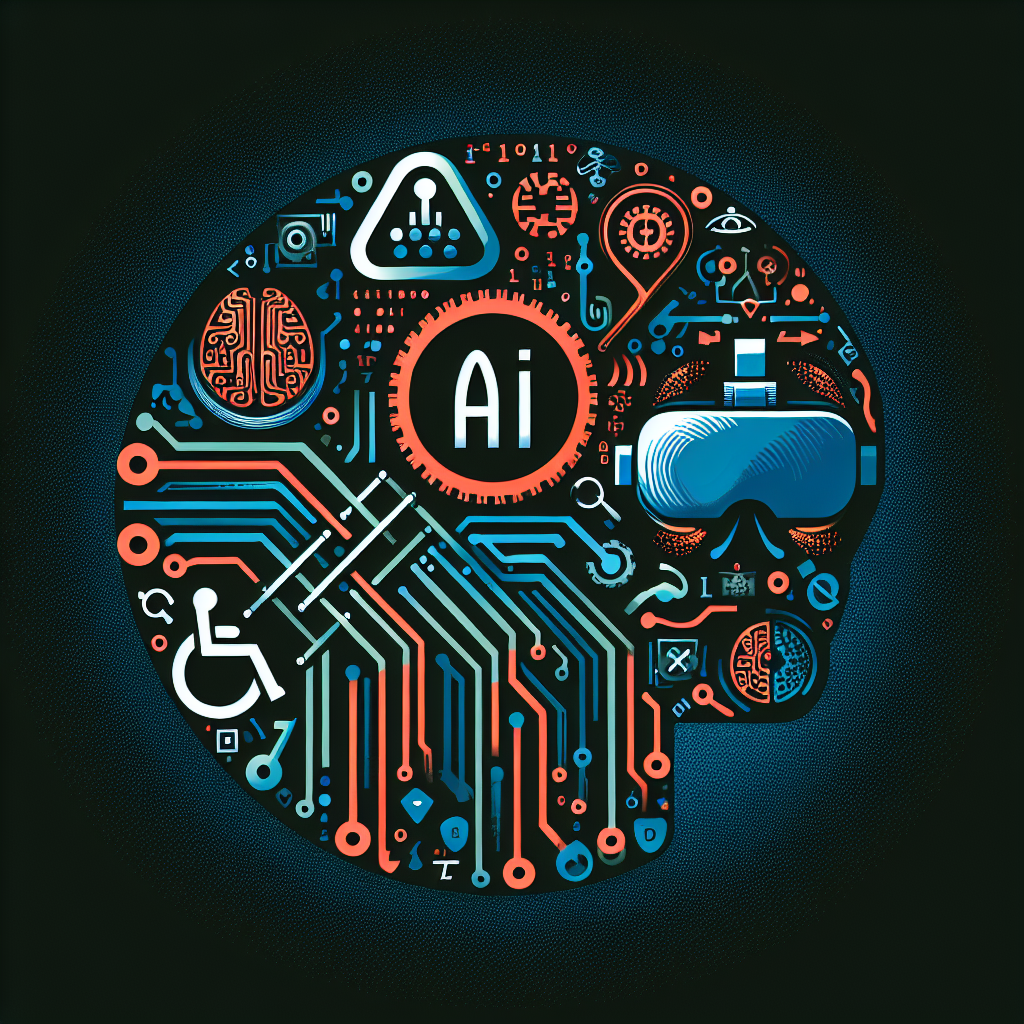Artificial intelligence (AI) has been making significant strides in improving accessibility in virtual reality (VR) experiences. VR technology has the potential to transport users to different worlds and provide immersive experiences, but it can also present barriers for individuals with disabilities. AI-powered solutions are helping to break down these barriers and make VR more inclusive for everyone.
One of the key ways AI is improving accessibility in VR experiences is through the development of assistive technologies. These technologies use AI algorithms to analyze and interpret user input, allowing individuals with disabilities to interact with VR environments in new and innovative ways. For example, AI-powered gesture recognition systems can track the movements of a user’s hands and translate them into commands within the VR environment. This technology enables individuals with limited mobility to navigate and interact with virtual worlds using only their hands.
Another way AI is enhancing accessibility in VR experiences is through the use of natural language processing (NLP) technology. NLP algorithms can analyze and understand spoken language, allowing individuals with speech or hearing impairments to communicate with virtual characters and navigate VR environments using voice commands. This technology is particularly beneficial for individuals with disabilities that may have difficulty using traditional input devices, such as keyboards or controllers.
AI is also being used to improve the overall user experience in VR environments for individuals with disabilities. For example, AI algorithms can adapt the VR experience based on the user’s unique needs and preferences. This could include customizing the color scheme or font size of text within the VR environment for individuals with visual impairments, or adjusting the difficulty level of gameplay for individuals with cognitive disabilities. By personalizing the VR experience in this way, AI is making VR more accessible and enjoyable for individuals with a wide range of disabilities.
In addition to assistive technologies, AI is also being used to enhance the accessibility of VR content itself. For example, AI algorithms can generate audio descriptions for VR experiences, providing individuals with visual impairments with a detailed narration of the on-screen action. AI can also be used to automatically generate subtitles for VR content, making it accessible to individuals with hearing impairments. These features ensure that individuals with disabilities can fully engage with and enjoy VR experiences, regardless of their unique accessibility needs.
Overall, AI is playing a crucial role in improving accessibility in VR experiences and making virtual worlds more inclusive for individuals with disabilities. By developing assistive technologies, enhancing user experiences, and improving the accessibility of VR content, AI is breaking down barriers and opening up new possibilities for individuals with disabilities to participate in the immersive world of virtual reality.
FAQs:
1. How is AI being used to improve accessibility in VR experiences?
AI is being used to develop assistive technologies, such as gesture recognition systems and natural language processing technology, that allow individuals with disabilities to interact with VR environments in new ways. AI is also being used to personalize the VR experience based on the user’s unique needs and preferences, making VR more accessible and enjoyable for individuals with disabilities.
2. What are some examples of AI-powered assistive technologies in VR?
Examples of AI-powered assistive technologies in VR include gesture recognition systems that track the movements of a user’s hands, NLP algorithms that analyze and understand spoken language, and AI algorithms that adapt the VR experience based on the user’s needs and preferences.
3. How does AI enhance the overall user experience in VR environments for individuals with disabilities?
AI can adapt the VR experience based on the user’s needs and preferences, such as customizing the color scheme or font size of text for individuals with visual impairments, or adjusting the difficulty level of gameplay for individuals with cognitive disabilities. This personalization makes VR more accessible and enjoyable for individuals with disabilities.
4. How does AI improve the accessibility of VR content itself?
AI can generate audio descriptions and subtitles for VR content, making it accessible to individuals with visual and hearing impairments. These features ensure that individuals with disabilities can fully engage with and enjoy VR experiences, regardless of their unique accessibility needs.
5. What is the impact of AI on the accessibility of VR experiences for individuals with disabilities?
AI is breaking down barriers and opening up new possibilities for individuals with disabilities to participate in the immersive world of virtual reality. By improving accessibility through assistive technologies, personalizing the user experience, and enhancing the accessibility of VR content, AI is making virtual worlds more inclusive for individuals with disabilities.

